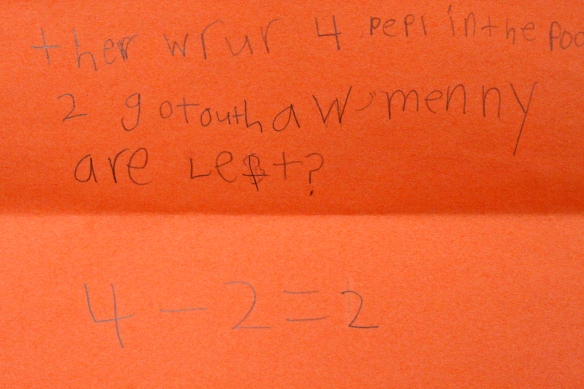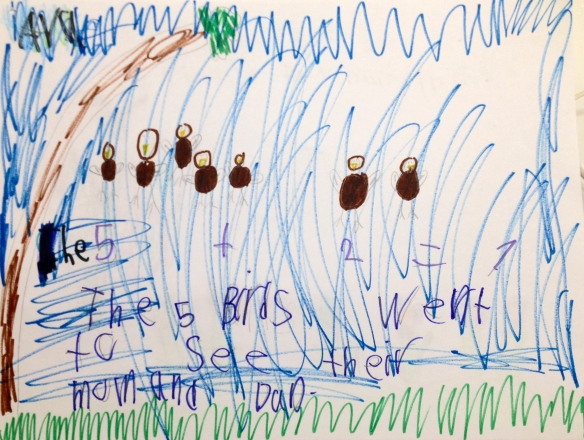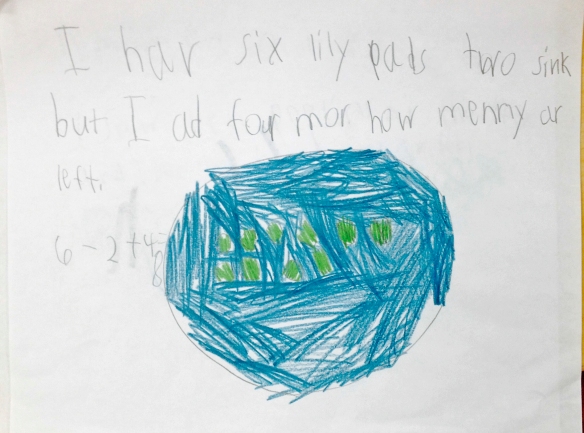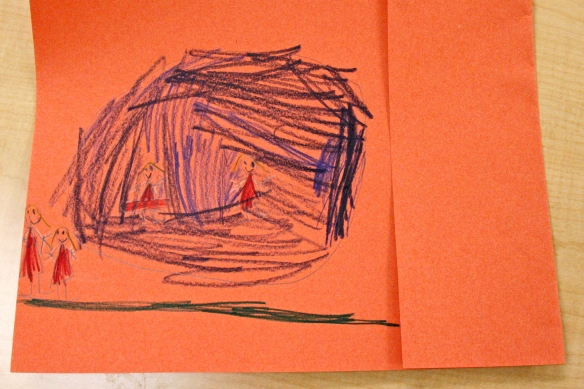By the second half of the year, my girls understood addition is putting things together to get more. They understood subtraction is removing things to get less. They were able to use various strategies to solve problems I created. They enjoyed showing their mathematical prowess as they computed the numbers I gave them.
But, I wanted more for them. And, in a funny way I wanted more for me. They were always amazing and amusing me with their thinking and creativity in other pursuits – actually, we amazed and amused each other! I wanted to experience that with them in math as well. I wasn’t sure how to provoke this creativity, independence and amazement in math. But, believed it could (and should) happen.
After letting it “ferment” in my brain for a few days, I had an idea. What if I asked them to create a real life addition problem? What about a real life subtraction problem? Oh my! What if I challenged them to create a real life math problem that involved subtraction AND addition? Now that would be something!
I asked them to think of an addition story. Not just two and two is four, but two of what and four of what. And perhaps most importantly why? Once they had their story, I asked them to record it in three ways: illustration, word and number. It was fascinating, and fun, to listen to them, talk with them, and watch them work.
Next I had them create a “math mystery.” Their pictures were visible, but their word and number stories were hidden (under the flap). When they were ready, they partnered with a friend, shared their pictures and tried to guess each other’s word and number stories.
This helped them notice nuances that they missed, or didn’t need, when all the information was before them. For instance, is this 2 people joining 2 other people floating in a balloon (2+2 =4)? Or is it 2 people getting off the rock to go home, leaving 2 people on the rock (4-2 =2)?
Two very different scenarios, and depending on your interpretation, either could be true. When differences arose I encouraged the girls to talk with one another. “Ask each other questions. Tell each other what you think and why you think it. Explain your work. Add detail if you think it’s important. Help each other!” What an important and impressive process. Sometimes they agreed to disagree, secure in their explanations. Sometimes they amended their drawings, or noticed something they previously missed and amended their guess.
I think they amazed and amused each other. Certainly they amazed and amused me! Hopefully they began to see that math is useful, fun and all around them.
So, what did you guess the word and number stories were for the above picture?
This real life math problem is:
 (There were 4 people in the pool. 2 got out. How many are left? 4-2=2)
(There were 4 people in the pool. 2 got out. How many are left? 4-2=2)
Of course! 🙂





